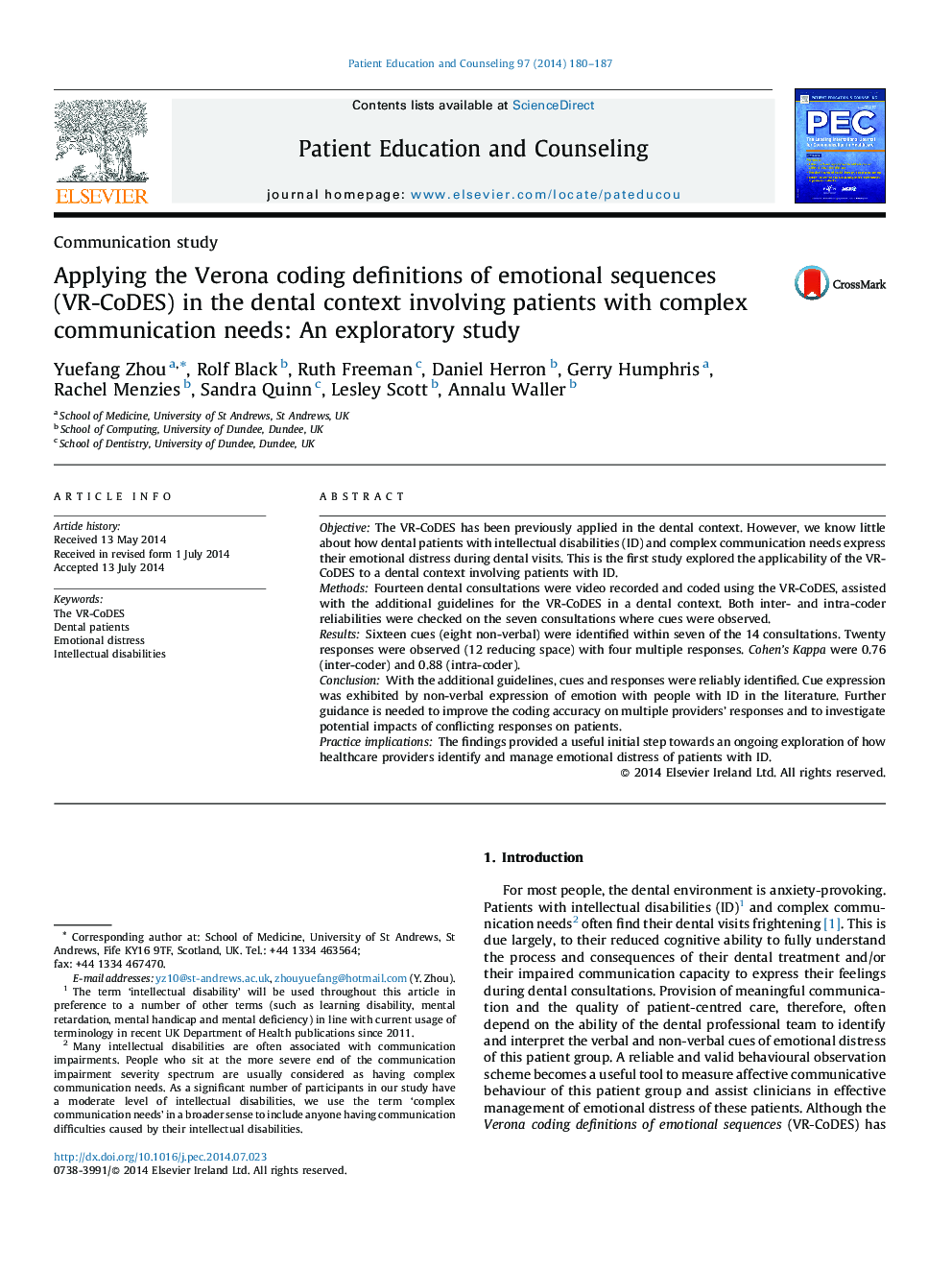| Article ID | Journal | Published Year | Pages | File Type |
|---|---|---|---|---|
| 3816153 | Patient Education and Counseling | 2014 | 8 Pages |
•We applied the VR-CoDES to a dental context involving patients with complex communication needs.•Sixteen cues were reliably identified within seven of the 14 consultations.•Cue expression was exhibited by non-verbal expression of emotion with people with intellectual disabilities.•Further guidance is needed to improve the coding accuracy on multiple dental professionals’ responses.
ObjectiveThe VR-CoDES has been previously applied in the dental context. However, we know little about how dental patients with intellectual disabilities (ID) and complex communication needs express their emotional distress during dental visits. This is the first study explored the applicability of the VR-CoDES to a dental context involving patients with ID.MethodsFourteen dental consultations were video recorded and coded using the VR-CoDES, assisted with the additional guidelines for the VR-CoDES in a dental context. Both inter- and intra-coder reliabilities were checked on the seven consultations where cues were observed.ResultsSixteen cues (eight non-verbal) were identified within seven of the 14 consultations. Twenty responses were observed (12 reducing space) with four multiple responses. Cohen's Kappa were 0.76 (inter-coder) and 0.88 (intra-coder).ConclusionWith the additional guidelines, cues and responses were reliably identified. Cue expression was exhibited by non-verbal expression of emotion with people with ID in the literature. Further guidance is needed to improve the coding accuracy on multiple providers’ responses and to investigate potential impacts of conflicting responses on patients.Practice implicationsThe findings provided a useful initial step towards an ongoing exploration of how healthcare providers identify and manage emotional distress of patients with ID.
